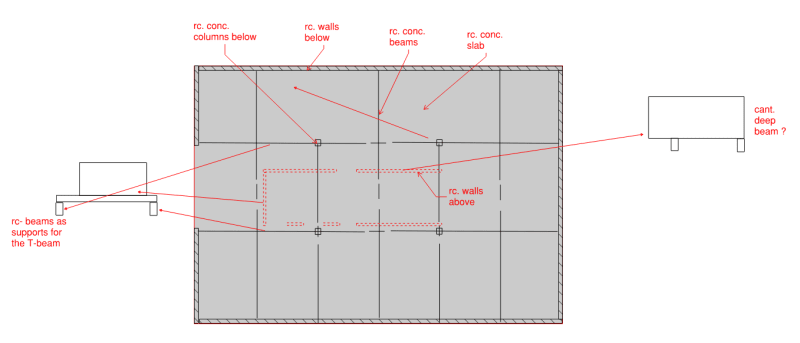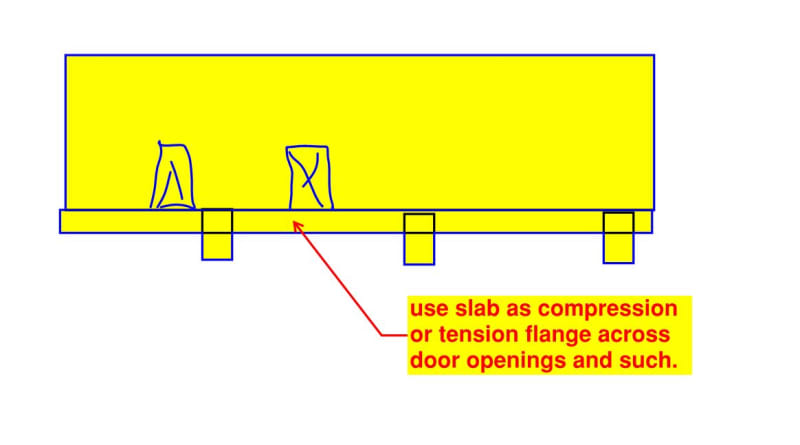otto_eng
Civil/Environmental
- Jun 27, 2017
- 88
Hi folks,
Has anyone of you designed a reinf. conc wall which is terminating on the slab that is above a parking space so the walls are not terminating at the foundation.
I would design the wall as a deep beam if I had any support points for the wall but unfortunately I do not have any beams or columns on either side of the wall so that is why I am exploring different options which makes sense both theoretically and practically.
I would be curious if I could consider it as a reverse T- shape beam slab being the flange and wall the web..
Do you guys have any refernce on the matter or any experience on a similar or same situation in the past ?
Has anyone of you designed a reinf. conc wall which is terminating on the slab that is above a parking space so the walls are not terminating at the foundation.
I would design the wall as a deep beam if I had any support points for the wall but unfortunately I do not have any beams or columns on either side of the wall so that is why I am exploring different options which makes sense both theoretically and practically.
I would be curious if I could consider it as a reverse T- shape beam slab being the flange and wall the web..
Do you guys have any refernce on the matter or any experience on a similar or same situation in the past ?


